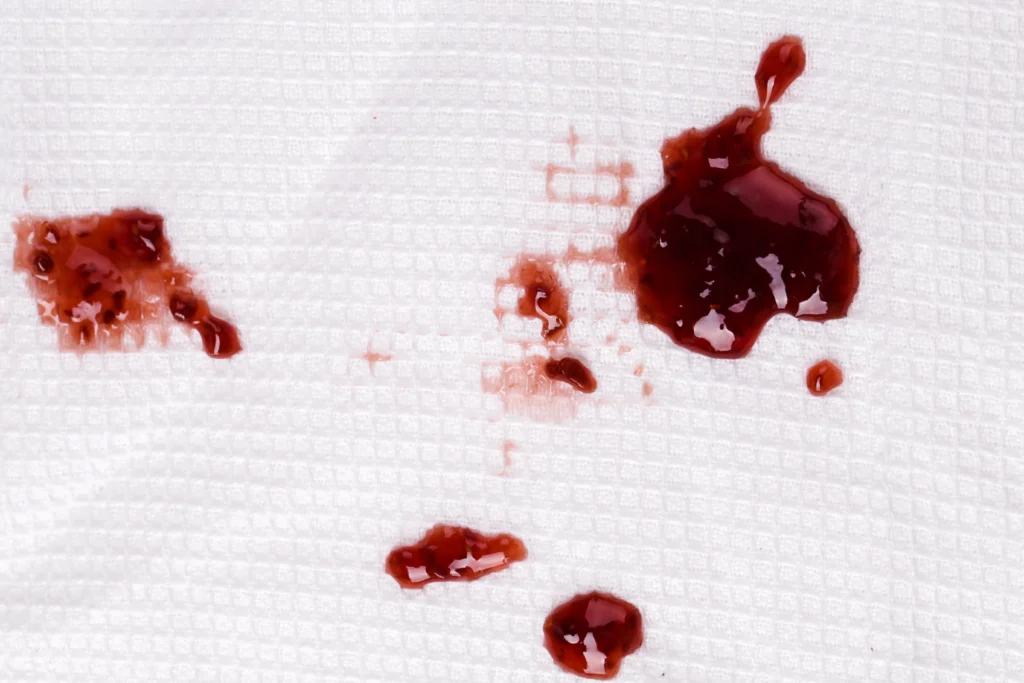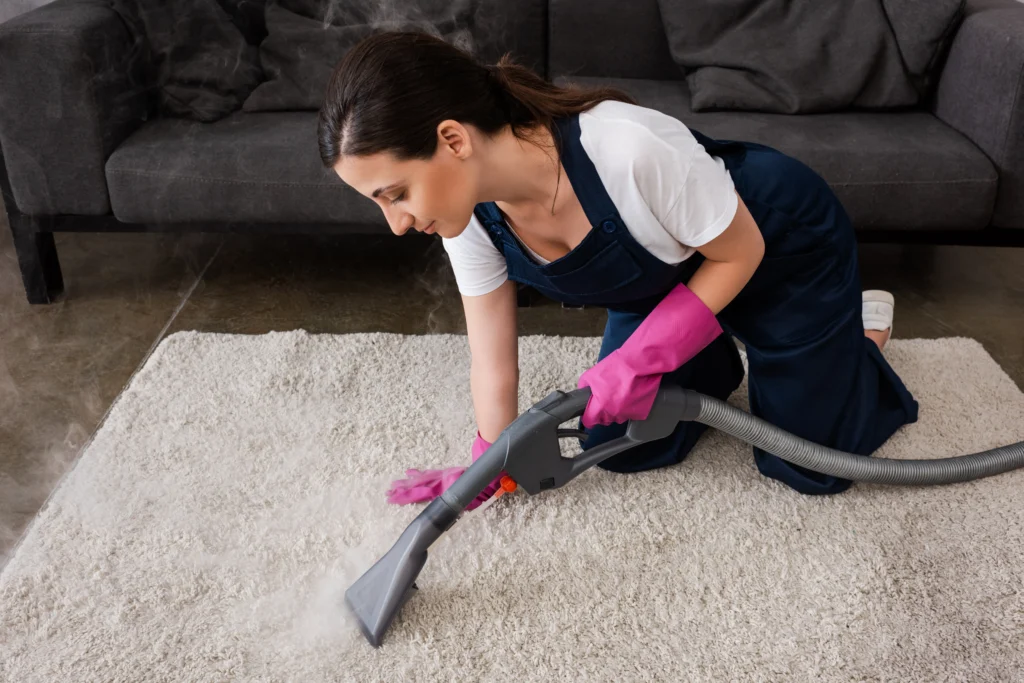Accidental blood stains on upholstery can be difficult to remove, especially if they are left untreated for too long. Whether caused by a minor injury, a pet accident, or any other mishap, blood contains proteins that bind to fabric fibers, making stains challenging to lift. Using the right cleaning techniques ensures that stains are removed effectively without damaging the upholstery.

Understanding Why Blood Stains Upholstery
Blood stains set quickly because of the proteins in hemoglobin, which bond with fabric fibers as they dry. Warm temperatures can accelerate this process, making the stain more difficult to remove. Using the correct cleaning method based on the upholstery fabric type is essential to avoid discoloration or fabric damage.
Before starting any cleaning process, checking the upholstery tag for cleaning codes ensures the safest method for the fabric:
- W – Water-based cleaners can be used.
- S – Solvent-based cleaners are recommended.
- WS – Both water- and solvent-based cleaners are safe.
- X – Professional cleaning only; avoid water or solvents.

Removing Fresh Blood Stains
When dealing with fresh blood, acting quickly prevents the stain from setting. Blotting the stain with a clean, cold, damp cloth lifts excess blood without spreading it further. Cold water is essential because warm or hot water can cause the stain to set.
A mild dish soap mixed with cold water is often effective for breaking down fresh stains. Dabbing the area gently and blotting with a dry cloth helps remove the stain without damaging the upholstery. For fabric upholstery, white vinegar diluted with water can act as a natural stain remover. After cleaning, allowing the area to air dry prevents moisture buildup in the fabric.

Removing Dried Blood Stains
If blood has already dried, loosening the stain before cleaning helps improve results. Using a soft brush or vacuum with an upholstery attachment can lift some dried residue before applying a cleaning solution.
A mixture of hydrogen peroxide and cold water is effective for breaking down dried blood stains. Applying a small amount to the affected area and blotting with a clean cloth lifts the stain without soaking the fabric. For delicate upholstery, a baking soda and water paste can provide a gentler solution. Allowing the paste to sit for 15 minutes before dabbing it away ensures that the fabric is not damaged.
Enzyme-based cleaners, commonly used for pet stains, work well for removing dried blood by breaking down organic matter. Testing any cleaner on a hidden section of the upholstery prevents unwanted discoloration before applying it to the stain.

Preventing Blood Stains on Upholstery
To protect upholstery from stains, using washable slipcovers or furniture protectors helps reduce direct exposure. Keeping a small first aid kit with bandages nearby prevents minor cuts from leaving blood stains on furniture. Regular upholstery maintenance, including professional upholstery cleaning, ensures that deep-set stains and allergens are removed, keeping fabric in top condition.
Useful Resources
- Learn more about how to remove blood stains from fabric from Good Housekeeping.
- Discover safe cleaning products for upholstery recommended by the EPA.

Conclusion
Blood stains on upholstery can be stubborn, but with quick action and the right cleaning techniques, they do not have to be permanent. Using cold water, mild detergents, or enzyme cleaners ensures that stains lift without damaging fabric. For persistent stains, professional upholstery cleaning services provide a deeper clean, restoring furniture to its original condition.


